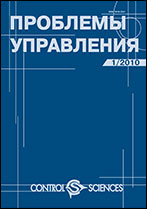|
Reviews
Methods for solving some problems of air traffic planning and regulation. Part II: Application of deep reinforcement learning
E. L. Kulida, V. G. Lebedev
Trapeznikov Institute of Control Sciences, Russian Academy of Sciences, Moscow, Russia
Abstract:
Following part I of the survey, this paper considers the problems of improving the safety and efficiency of air traffic flows. The main challenge in conflict detection and resolution by traditional optimization methods is computation time: tens and even hundreds of seconds are required. However, this is not so much for response in real situations. Deep reinforcement learning has recently become widespread due to solving high-dimensional decision problems with nonlinearity in an acceptable time. Research works on the use of deep reinforcement learning in air traffic management have appeared in the last few years. Part II focuses on the application of this promising approach to the following problems: detecting and resolving aircraft conflicts, reducing the complexity of air traffic at the national or continental level (a large-scale problem), and increasing the efficiency of airport runways through the improved planning of aircraft landings.
Keywords:
air traffic management, strategic planning of 4D trajectories, aircraft conflict detection and resolution, reinforcement learning.
Received: 10.11.2022
Revised: 19.12.2022
Accepted: 20.12.2022
Citation:
E. L. Kulida, V. G. Lebedev, “Methods for solving some problems of air traffic planning and regulation. Part II: Application of deep reinforcement learning”, Probl. Upr., 2023, no. 2, 3–18; Control Sciences, 2023, no. 2, 2–14
Linking options:
https://www.mathnet.ru/eng/pu1306 https://www.mathnet.ru/eng/pu/v2/p3
|

| Statistics & downloads: |
| Abstract page: | 101 | | Full-text PDF : | 27 | | References: | 18 |
|




 Contact us:
Contact us: Terms of Use
Terms of Use
 Registration to the website
Registration to the website Logotypes
Logotypes







 Citation in format
Citation in format 